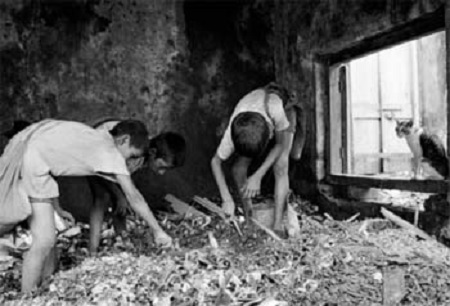Dec 31, 2025
Dec 31, 2025

According to recent reports the number of street children is increasing globally which is a very disturbing phenomenon indeed. There have been several studies on street children, each aimed at a particular side of the issue.
Broadly speaking, street children may be classified into two categories:
The first category include rag pickers, child beggars, child salespersons etc., while the latter include children who loiter about in the street, many of whom later become anti socials, juvenile delinquents, drug peddlers and pick pockets.
Street children can be further sub categorized as per their age, gender, work, family status, kind of environment, linkage with family etc. Often it is found that such a child has a stronger linkage with his “friends” on the street than with his family. This is often because of the unhappy and unhealthy family environment where the father may be a drunkard or unemployed and the mother is struggling to make both ends meet with a number of children in tow. There is squalor and poverty all around and hardly any food to eat. Then the child prefers the open street where he can breathe fresh air and feels a sense of adventure. Plus of course there is always the hope that each new day will bring something good for him.
There are some street children who are the main bread winners of the family. They are sent out to the streets to earn some money to keep the home fires burning. They sometimes operate along with their siblings. For them the street is their place of work and by evening they return to their homes. They have strong linkages to their family and feel a sense of responsibility as well.
UNICEF has conducted several important studies on street children. The most important findings are as follows:
Further, most street children are characterized by lack of education, skill, training, finance, guidance and help. They have no occupational or career ladder. Their nutritional status is unsatisfactory and most suffer from malnutrition and under nutrition. As a result their growth is slow and they also develop several deformities due to lack of essential nutrients in their diet.
One of the major causes of concern for the street children is that they are exposed to physical abuse. With no grown up in sight, unscrupulous persons often lure away the innocent children and use them to satisfy their carnal desires. Needless to say girl children are at a much greater risk. As a result many children get afflicted by AIDS and other terrible diseases.
Violence is a part and parcel of their lives. Many a time they get caught in violence over territorial rights. Some are lured away by criminal gangs. Drug peddling is common among many groups of street children. They are engaged in a daily struggle for survival and in their struggle some of them develop a particular resourcefulness. They hardly have a social status. Their existence is tolerated but not trusted. They are socially and psychologically marginalized and are almost an invisible group, owned by no one.
What, then, can be done to alleviate their condition? In the first place their existence has to be formally recognized by the government. They fall into three categories:
The Government should have a formal policy framework to monitor the street children, alleviate their condition and bring them into the social mainstream. The Department of Women and Child Development can be entrusted with this work. The children can be put into temporary ‘homes’ , given basic education and taught some vocational skills, so that they can be independent.
Non-governmental organizations (NGOs) can also be roped in to play an effective role in this regard. They can take up the street children area wise and help them. Designing, organizing and delivering the services can be vested with the NGOs, while the Government can monitor the progress of the schemes. Local residents (including retired persons and other volunteers) can be identified to help out in this noble cause.
Financial assistance is of course necessary at the outset. Infrastructural facilities are also needed.
Last but not the least the street children should not be treated as a homogenous group. Each child is different and may have a different problem. Human factors like awareness, motivation, perception and participation should be the key words when addressing the problem.
Children are the blooming flowers of the garden of society and the future citizens of the country. No country can progress if a large number of its future citizens languish on the street amidst want, hunger, squalor and poverty. It is the duty of each one of us to do our mite to alleviate the condition of the street and make the future brighter for them.
Image (c) Gettyimages.com
01-Jun-2019
More by : Dr. Anjana Maitra